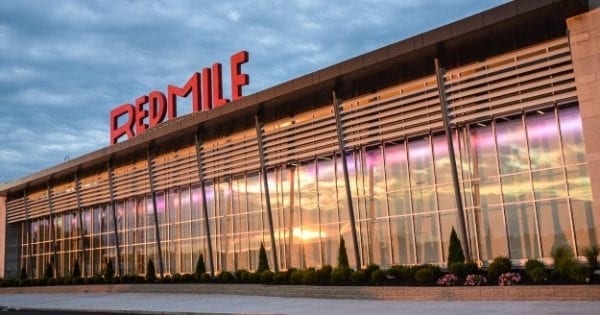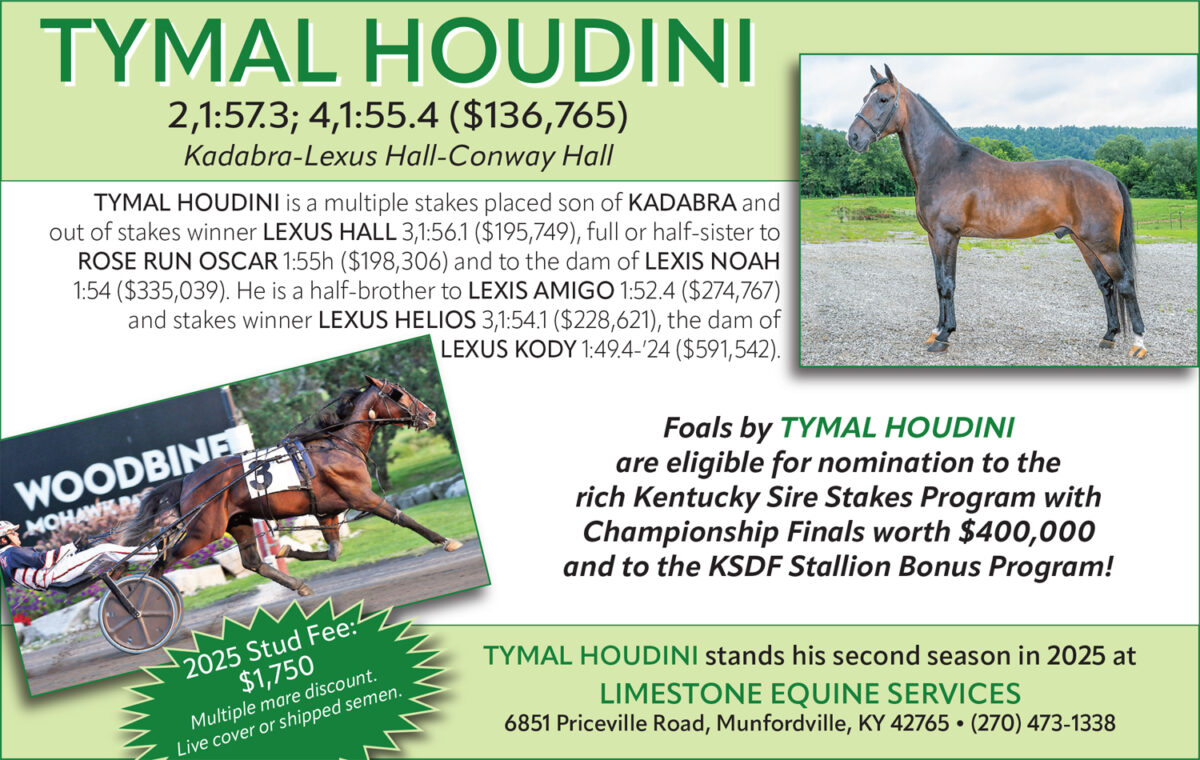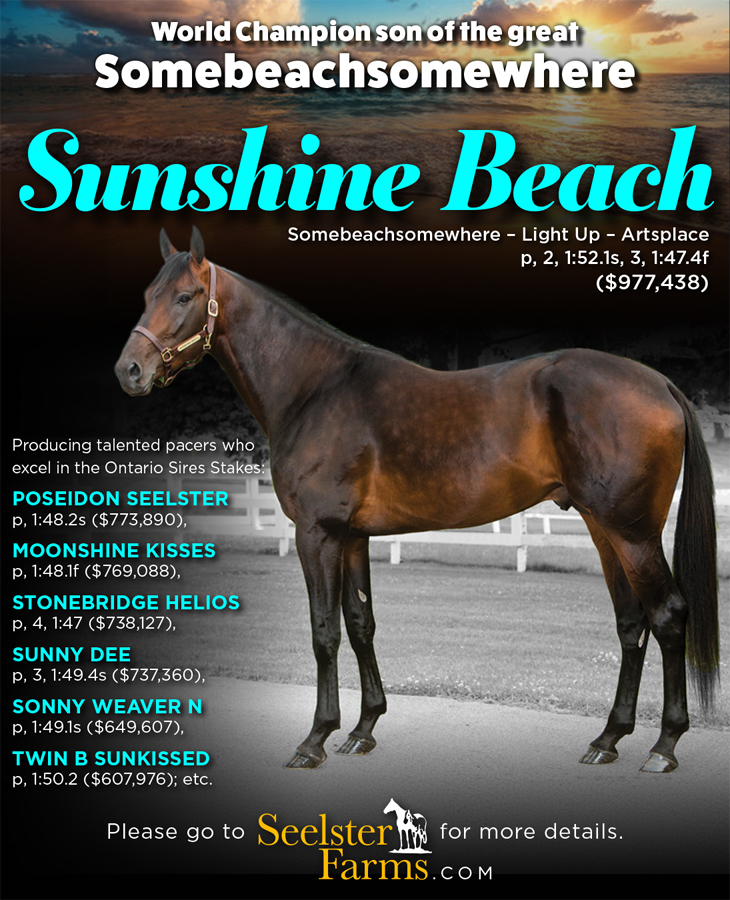
Getting out of the red at Red Mile
A year after the historical racing parlor opened at the 141-year-old racetrack, returns have not met projections. But purses are up and growing and optimism abounds.
by Dave Briggs
A year after the $42 million historical racing parlor opened at Red Mile in Lexington, KY, president and CEO Joe Costa speaks about the returns with a mixture of optimism and frustration.
Purses are up and are projected to continue that trend. But the racing side of the operation still loses money and the track’s patient ownership trio of George Segal, Joe Thomson and Frank “the elder” Antonacci have invested heavily in Red Mile’s makeover and have yet to see a return on that investment.
“The ownership put up a lot of money, partnered with Keeneland, built a beautiful facility – renovated a facility that was desperately in need of renovation — and, to look at, it looks like ‘boy, you must be making a ton of money.’ And, quite frankly, we have not been able to, after one year, return one dollar to our owners for their investment,” Costa said.
“The funny thing is, as soon as you look like a success then everyone wants to spend your money — ‘Why aren’t you doing this?’, ‘Why aren’t you doing that?’ To be honest with you, there has been so much inaction attributed to Red Mile, in that it hasn’t kept up with the times for so many years, which is why it was able to be sold in 2000 to the present ownership group. So, there’s a lot of people who have been anxious and waiting for good news in Kentucky and now that there’s good news everybody wants to rush ahead and is impatient to know what the future looks like.”
Antonacci acknowledged that 902 historical racing machines “quite frankly, hasn’t helped the (racing) operation of Red Mile. The racing at Red Mile still loses money, but the blessing in the place is the breeders in Kentucky are going to race for twice as much next year as they did this year,. What I think people need to understand is The Red Mile, for 100-and-something years has been a breeders’ meet. When the ownership group bought it, it was meant to be a breeders’ meet. That’s what we think it should be.”
Costa said Segal, Thomson and Antonacci’s investment in historical racing and a new simulcast parlor at Red Mile is “one more try” to save a beloved standardbred institution that celebrated its 141st anniversary on Wednesday (Sept. 28).
“The ownership loved this institution enough that they were willing to double down after 16 years,” Costa said. “If it was going to work, it was going to require them to make another significant investment and give it one more try to get it to work. I think historical racing is that one more try, that hope that a standardbred industry can be sustainable in Kentucky – not only this institution, but the breeding industry where Castleton Farms, Almahurst Farm, all these great places no longer exist. The racing stables no longer exist. So we have seen the industry in Kentucky not die, but really atrophied in every aspect. So it’s not surprising that every segment of the industry is now impatient for what the promise of what historical wagering can mean.”
Costa said historical racing machines — where patrons gamble on the outcome of a previously run horse race from a database of thousands of races — have been a learning experience for both the players and the track.
“First of all, (patrons) don’t know how to play the games,” Costa said, emphasizing they are not slot machines and behave quite differently. “We’ve instituted an ambassador program where, when you sign up for the first time, we have an attendant waiting to greet you and walk you through the floor. If a client or customer selects a game, he will offer his assistance in teaching that game to the customer.
“We’ve also learned that our business is more Disney than Las Vegas. These machines do not have the power of a Class 3 gaming device, like a slot machine. So, it’s very dependent on hospitality and entertainment and it takes dedication by that staff to send everyone home with a value-added component – that if they came with $50 and lost $50 they would still say they had a good time at Red Mile for a couple of hours and come back.”
Costa said, “there’s been many, many, many surprises” in a year, but “no bad surprises. The surprises have come in the form of our understanding of not only this business, but also how this business, so far, connects with the community.”
The Lexington Herald-Leader reported on Sept. 11 that through August about $197 million had been wagered at Red Mile’s historical racing facility which has generated about $12 million in gross revenue.
While the numbers have fallen short of initial projections, Costa said the facility is following a similar slow, steady growth pattern as experienced at Kentucky Downs, which opened its historical racing parlor in September of 2011.
“There’s been so many lessons to be learned, but the fundamental lesson is that it would be a good business, that it would re-energize the institution and allow us to make the capital contribution, that it would be great for purses and breeders and the horse racing industry. All those things are true and nothing that we have seen through one year tells us anything except that we should expect continued growth along the trend lines of what Kentucky Downs has experienced,” Costa said.
Costa said the racing side has also benefitted from the historical racing facility that brought with it a new simulcast facility that — thanks to the partnership with Keeneland — allowed there to be thoroughbred simulcasting on site for the first time in many years.
“When you have the entertainment and hospitality business that comes with historical racing, it’s not difficult, once that cost is already in place, to expand their utilization to live racing. Before, with only a live racing economic model, it was exceptionally difficult to outsource hospitality or bring it in for the short amount of time you are racing live. But now that we have all these new full-time employees, we hope to be continually doing a better job with the live racing experience for customers,” Costa said.
“We’re also starting, for the first time, to be able to cross-promote racing with the historical racing venues.”
Costa said he can’t get into specifics about the horsemen’s share of the revenue due to a confidentiality agreement, but, “our overnight purses have doubled from before and so we’re optimistic that the trend line on that will continue.”
As purses continue to grow, Costa said it will be interesting to see if prices for Kentucky eligible yearlings will be up at next week’s Lexington-Selected Yearling Sale that runs Oct. 4-8.
It’s all part of a long 16 years for Costa and the current ownership to find an alternate revenue stream to keep the track open.
“Since I got here in the spring of 2000 there has been a gaming bill brought before the commonwealth every single year for those 16 years and it never succeeded for various reasons,” Costa said.
In recent years, ownership re-zoned about half of the property and sold off some real estate to keep the operation afloat until historical racing came along.
“There’s a lot of hopefulness. There’s a lot of work. I’ve told our board of directors, ‘I’ve been playing defense for 15 years and now when I get up in the morning I can play offense. I can get up in the morning and, if I can dream it, it might be possible,’” Costa said.
His mission is as much personal as it is professional.
“I fell in love with The Red Mile in 1980, coming down here for Grand Circuit, sitting in a railbird seat and watching the greatest horses in the world over that red clay,” Costa said.
“If there is a standardbred ‘church’ or ‘Mecca’ then it’s this piece of ground in Lexington, Kentucky. And that’s important that we retain some of this. It would be remiss if your readership did not understand the type of commitment and dedication that this ownership group has had, with that very premise – that this is holy ground and there needs to be a way to preserve it. And they know to preserve it, they need to have an economic model that works.”
The entire Red Mile team is gambling that historical racing is that life-saving model.













